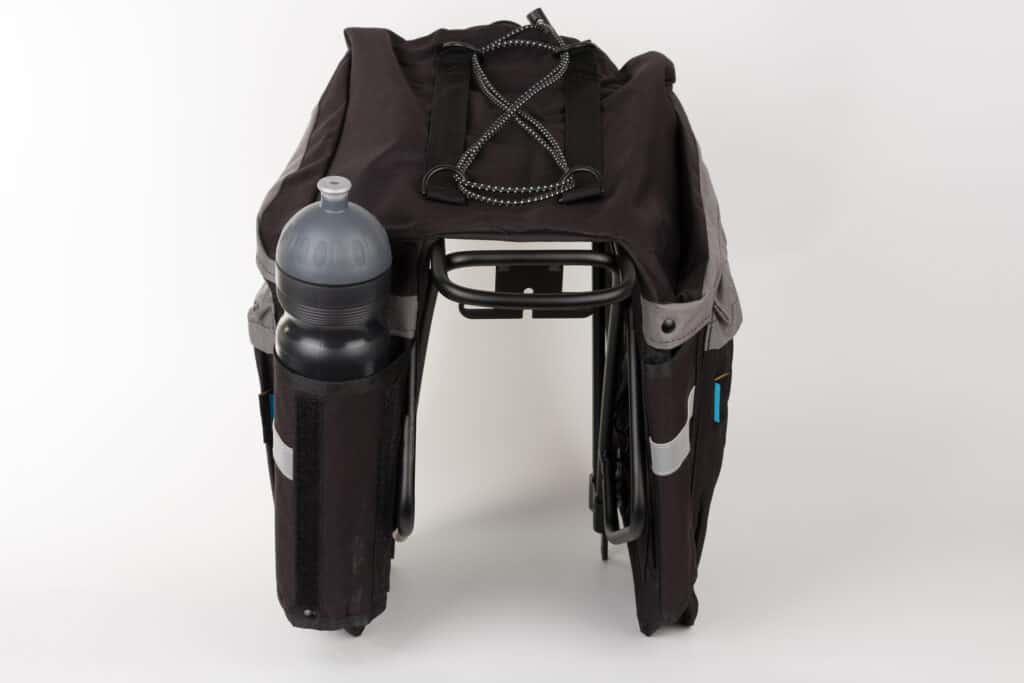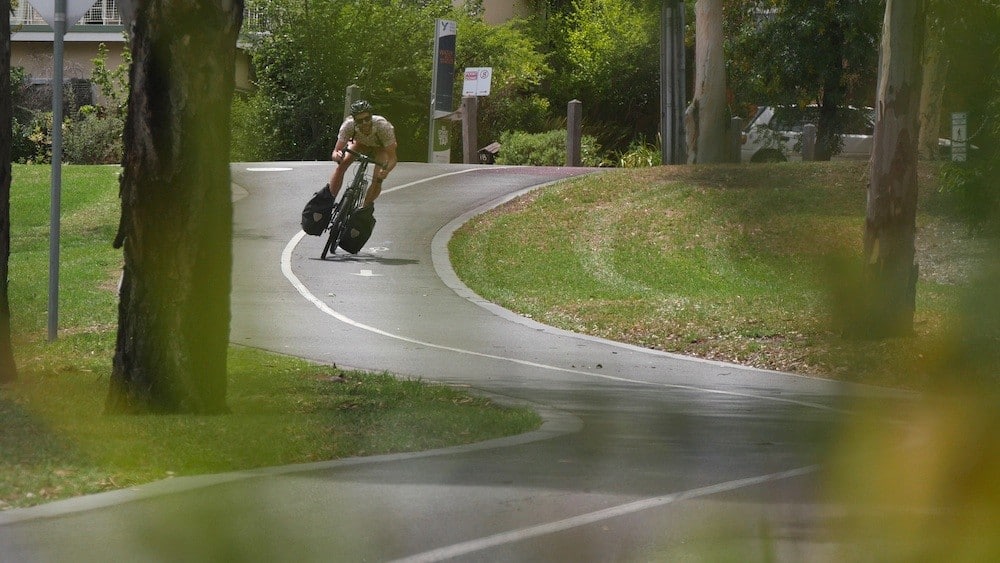Introduction – Rear Rack For Fat Bikes
Biking is such a great way to get around in dense urban areas that for readers of ShrinkthatFootprint we want to make sure you get to accessorize and customize your bike as much as possible. Today we’ll talk about adding a storage rack to your fat bike.

What Is A Fat Bike?
A fat bike is a bicycle with large, wide tires. Fat bikes are designed for riding on snow and sand. Fat bikes have become very popular in recent years, and they are a great option for people who want to ride on trails in the winter.
What Is A Fat Bike Rear Rack?
A fat bike rear rack is a great way to carrying your gear when you are out on the trails. Fat bike rear racks come in a variety of sizes, shapes, and colors. The most important thing to consider when choosing a rack is the weight capacity. Make sure to choose a rack that can handle the weight of your gear. The type of rack is also important. Pannier racks are great for carrying smaller items, while trunk racks are better for larger items. The size of the rack is also important. Make sure to choose a rack that is the right size for your bike.
Uses Of The Fat Bike Rear Rack
The fat bike rear rack has many uses. The most common use is to carry gear when you are out on the trails. The rack can also be used to carry a spare tire, or to mount a snowboard or ski.
Advantages of the fat bike rear rack
The fat bike rear rack has many advantages. The most obvious advantage is that it allows you to carry more gear with you when you are out on the trails. The rack is also very versatile and can be used for a variety of different purposes.
Disadvantages of the fat bike rear rack
The fat bike rear rack has a few disadvantages. The most notable disadvantage is that it can add a lot of weight to your bike. The rack can also be difficult to install, and it can be hard to find a rack that is the right size for your bike.
How To Choose One For You
There are a few things to consider when choosing a fat bike rear rack. The most important thing to consider is the weight capacity. Make sure to choose a rack that can handle the weight of your gear. The type of rack is also important. Pannier racks are great for carrying smaller items, while trunk racks are better for larger items. The size of the rack is also important. Make sure to choose a rack that is the right size for your bike.
What About A Front Rack?

A front rack can also be a great option for carrying gear on your fat bike. A front rack is typically smaller and lighter than a rear rack. The main advantage of a front rack is that it does not add as much weight to your bike. The main disadvantage of a front rack is that it can be more difficult to install, and it can be harder to find a rack that is the right size for your bike.
Which Companies Are Reputable?
There are several companies known for producing high-quality bike racks, including racks for bikes with fat tires. Here are a few reputable ones:
- Topeak: Known for their innovative designs, Topeak offers a variety of bike accessories including rear racks. They produce a wide range of bike racks for different types of bicycles, including fat tire bikes.
- Thule: Thule is a Swedish company known for its high-quality outdoor and transportation products. They offer a variety of bike racks, including models designed for bikes with fat tires.
- Yakima: Yakima is a well-known brand in the bike rack space, known for their durability and reliability. They offer racks for various types of bikes, including fat tire ones.
- Blackburn: Blackburn is renowned for their bike accessories, including bike racks. Their Outpost Fat Bike Rack is specifically designed for fat tire bikes and is highly rated.
- Ibera: Ibera offers affordable bike racks that do not compromise on quality. They have a wide range of racks suitable for different bike types.
- Salsa: Salsa is known for their bikepacking and touring gear. Their Alternator Rack Wide is designed specifically for fat bikes.
- Surly: Surly is a reputable bike manufacturer that also offers accessories such as racks. They’ve got racks that are compatible with fat bikes, like their Nice Rack.
Where Can I Find One?
Fat bike rear racks are available at most bike shops, and they are also available online. What shops online sell these? There are a few online retailers that sell fat bike rear racks. Some of the most popular online retailers include J&R Bicycles, Bike Nashbar, and Amazon.
J&R Bicycles is an online retailer that specializes in selling bike parts and accessories. J&R Bicycles has a wide selection of fat bike rear racks, and they offer free shipping on orders over $50.
Bike Nashbar is an online retailer that specializes in selling bike parts and accessories. Bike Nashbar has a wide selection of fat bike rear racks, and they offer free shipping on orders over $49.
Amazon is an online retailer that sells a wide variety of products. Amazon has a wide selection of fat bike rear racks, and they offer free shipping on eligible items.
How Much Do These Things Cost?
We break the above brands into 3 price categories.
Low-Price Range (Approximately $30 to $75):
- Ibera
- Blackburn
Medium-Price Range (Approximately $50 to $150):
- Topeak
- Yakima
- Salsa
High-Price Range (Approximately $100 to $250):
- Thule
- Surly
Installing A Fat Bike Rear Rack Can Be Tricky.
Tools you’ll need:
- Allen keys (or Hex keys)
- Wrench (the size can vary based on your rack’s bolts)
Steps:
- Check Compatibility: Ensure that your bike is compatible with a rear rack. Look for mounting points or braze-ons on your bike’s frame near the rear wheel. These are typically found above the rear wheel on the seat stays, and near the hub on the dropouts or near the axle.
- Prepare the Rack: Unpack your bike rack and identify all the parts. Usually, a rack consists of the main rack body and two sets of struts or stays. One set of stays connects to the bike near the rear axle, and the other set connects higher up on the frame.
- Attach the Lower Stays: Line up the lower holes in the rack stays with the lower mounting points on your bike, typically found near the rear axle. Insert the bolts and loosely tighten them. Don’t fully tighten these yet, as you may need to adjust the position of the rack.
- Attach the Upper Stays: Similarly, line up the upper holes of the rack stays with the upper mounting points on your bike, typically found on the seat stays. Again, insert the bolts and loosely tighten them.
- Adjust the Rack: With all four points loosely connected, adjust the rack so it’s level. The rack should be parallel with the ground and not touching any part of the wheel or brake.
- Tighten the Bolts: Once you’re happy with the position of the rack, tighten all the bolts securely. Check that the rack is firm and doesn’t move around.
- Double Check Your Work: It’s important to ensure that the rack is securely attached and doesn’t interfere with your wheel, brake, or gear mechanisms. Give the rack a good wiggle to make sure it’s secure. Ensure there’s clearance for your heel when pedaling so that your foot doesn’t strike the rack or any panniers you might attach.
These are general instructions and the specifics may vary depending on the exact model of your rack and bicycle. Always follow the manufacturer’s instructions when installing a new bike rack. For a novice, installing a rear bike rack might take anywhere from 30 minutes to an hour. This estimate assumes that all the necessary tools are on hand, the rack is compatible with the bike, and that the installation process goes smoothly.
Will A Bike Shop Help Me With The Installation?
Yes, most bike shops will be happy to help you with the installation of your fat bike rear rack.

Anne Lauer
Anna Lauer is a writer, gardener, and homesteader living in rural Wisconsin. She has written for Mother Earth News, Grit, and Hobby Farms magazines. Anna is writing a new book about growing your food for free and an ultimate guide to producing food at little to no cost. When she’s not writing or gardening, Anna enjoys spending time with her husband and two young daughters.
